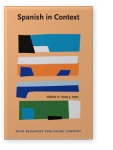Vol. 17:3 (2020) ► pp.488–510
“Oh, I don’t even know how to say this in Spanish”
The linguistic representation of Latinxs in “Jane the Virgin”
In the absence of complex and diverse Latinx characters in entertainment media, film and television representations of Latinxs’ culture and language typically embody limiting and harmful stereotypes. However, the highly praised U.S.-based romantic comedy-drama “Jane the Virgin” offers a very different representation. With believable characters and complex linguistic dynamics, the show provides a positive and relatively realistic representation both of Latinxs across generations and of their linguistic repertoires as documented in community studies of Latinx language. Through an analysis of the linguistic practices of Latinx characters in “Jane the Virgin,” including patterns of intergenerational language shift, linguistic accommodation, and codeswitching, it is argued that the show acknowledges and treats as unmarked the linguistic complexity of Latinx families and communities. At the same time, the show oversimplifies this complexity in some ways, creating a representation that may be perceived as authentic despite its divergence from real-world Latinx language use.
Article outline
- 1.Introduction
- 2.Latinx linguistic practices
- 3.Data and methods
- 4.Analysis
- 4.1Nonreciprocal bilingualism
- 4.2Linguistic accommodation
- 4.3Conversational codeswitching
- 5.The production and reception of bilingualism in “Jane the Virgin”
- 6.Conclusion
- Acknowledgements
- Notes
-
References
